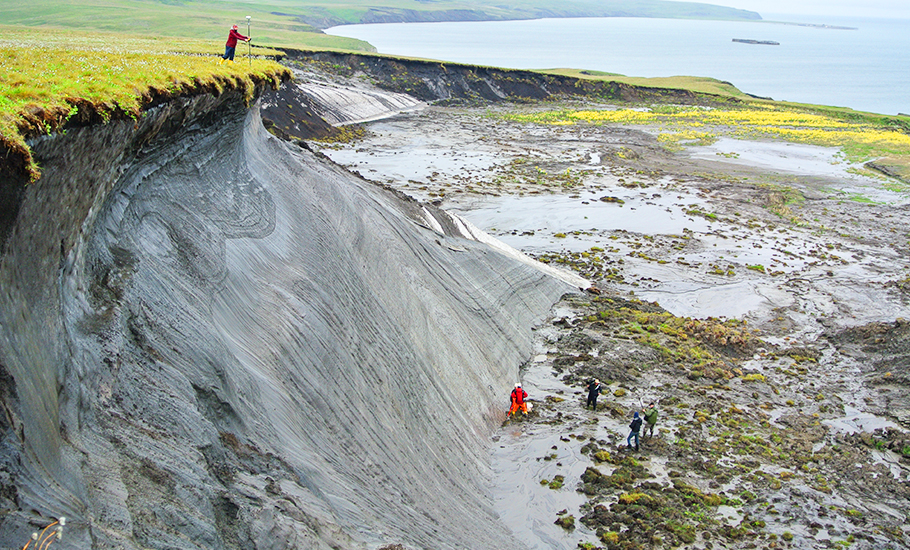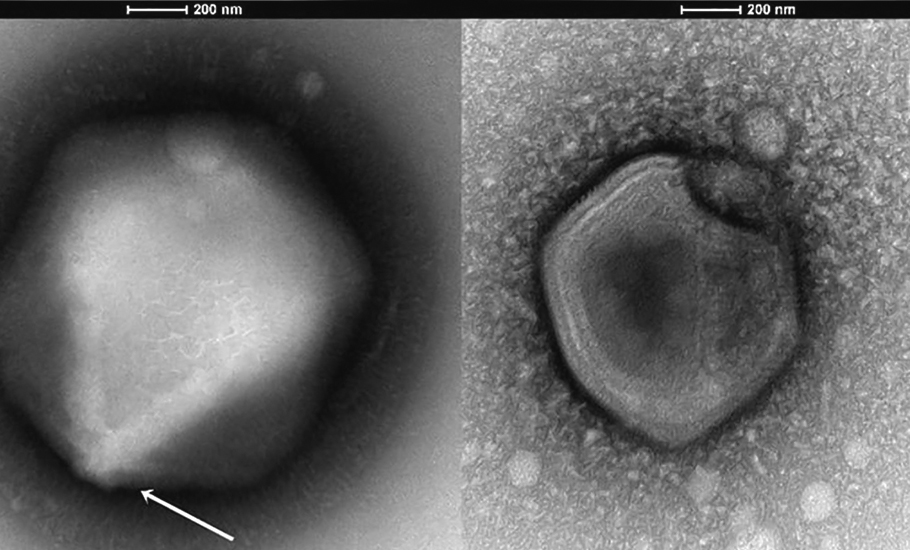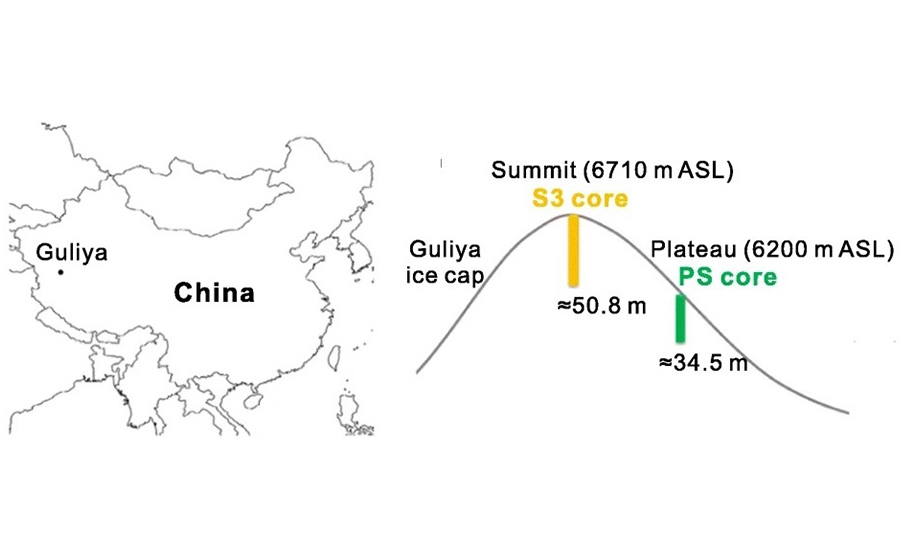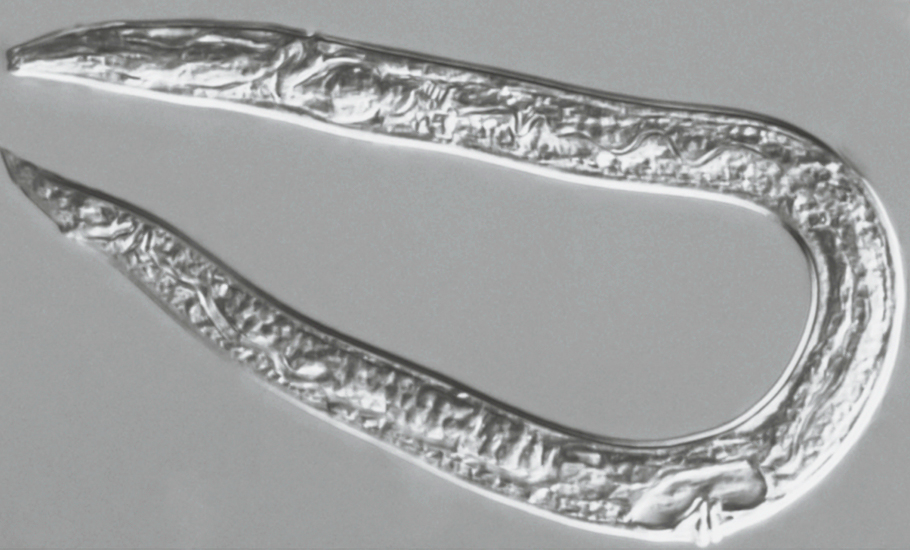
- Home
- News
- Analysis
- States
- Perspective
- Videos
- Education
- Entertainment
- Elections
- World Cup 2023
- Features
- Health
- Business
- Series
- Economy Series
- Earth Day
- Kashmir’s Frozen Turbulence
- India@75
- The legend of Ramjanmabhoomi
- Liberalisation@30
- How to tame a dragon
- Celebrating biodiversity
- Farm Matters
- 50 days of solitude
- Bringing Migrants Home
- Budget 2020
- Jharkhand Votes
- The Federal Investigates
- The Federal Impact
- Vanishing Sand
- Gandhi @ 150
- Andhra Today
- Field report
- Operation Gulmarg
- Pandemic @1 Mn in India
- The Federal Year-End
- The Zero Year
- Premium
- Science
- Brand studio
- Home
- NewsNews
- Analysis
- StatesStates
- PerspectivePerspective
- VideosVideos
- Entertainment
- ElectionsElections
- Sports
- Loading...
Sports - Features
- BusinessBusiness
- Premium
- Loading...
Premium

Is return of ‘zombie virus’ 45,000 years later the start of the endgame?

Melting glaciers and thawing permafrost, climatologists fear, may revive ancient viruses and open up a ‘Pandora’s Box’ of infectious diseases. One ancient virus that went into deep sleep 48,500 years ago, buried under layers of ice in the bone-chilling Siberian tundra region, like the extreme version of a Rip Van Winkle tale, scientist say, have come back to life. The virus...
Melting glaciers and thawing permafrost, climatologists fear, may revive ancient viruses and open up a ‘Pandora’s Box’ of infectious diseases.
One ancient virus that went into deep sleep 48,500 years ago, buried under layers of ice in the bone-chilling Siberian tundra region, like the extreme version of a Rip Van Winkle tale, scientist say, have come back to life. The virus was found in the melted water from the thawing permafrost from global warming. Called ‘Zombie virus’ by the media, these pathogens, now extinct, could be revived after lying dormant for thousands of years buried under the freezing lakes since the last ice age. Like the plot of Jurassic Park, when the frozen soil of the tundra and Tibet inevitably thaw, the awakened ancient pathogens, scientists alert, could pose a severe public health threat.
Is apocalypse in the waiting?
Until about 12,000 years ago, under the Ice Age, the Earth was a frozen planet. The global climate warmed around 12,000 years ago due to the natural cycle, and huge rainforests and vast grasslands formed in the tropical regions. Yet the Ice Age remnants remained as ice caps in the Antarctic, the Arctic and the Tibetan plateau. With global warming driving the 6,50,000-year-old Siberian permafrost and ancient glaciers of Tibet to melt, extinct live microbes and archaic life are again seeing the light of day.
A team of French, Russian and German researchers, led by Jean-Michel Claverie, a team member and a researcher at Aix-Marseille University in France, have discovered 13 previously unknown pathogens from the seven different ancient Siberian permafrost samples, one from Lena river and another from Kamchatka cryosol.

In the maximum bio-security laboratory, Claverie and his team added small amounts of each sample to lab cultures of various types of amoeba. After years of lumber, these viruses resurrected in the Petri dish and infected the Acanthamoeba, a microscopic amoeba commonly found in lakes and ponds. Once inside, these redeemed viruses took over the cellular machinery of the single-celled amoeba and made copies of themselves. After the viral copies were made, the overworked host cell died, releasing thousands of viral particles. One of the pathogens revived in the laboratory was a now-extinct virus that lived 48,500 years ago. The team reported the surprising finding in the last week of November 2022.

Chilling history
Excavating ice can heave up clues about the past climatic history of the Earth. The vast Antarctic and Arctic ice sheets and ice caps of the tall Tibetan mountains are formed from the annual snow precipitation. Year after year, layers of falling snow freeze into ice. Bubbles of air, flecks of dust pollens and airborne viruses in the atmosphere are captured by the falling snow and buried deep. Clues to Earth’s past climate lay hidden under these sheaths of ice.
Climatologists drill and extract ice cores to tease out the globule of ancient air and specks of dust from the Earth’s past history. The deeper the ice sample, the older it is in Earth’s history. From the evidence retrieved from these ice core samples, climatologists reconstruct the climatic history and the environmental conditions of the Earth. In the Guliya Glacier samples, researchers found not just data on past climatic changes but evidence of viable microbes lurking in the glacier.
Not the first time
American and Chinese explorers yanked two ice core samples from the Guliya Glacier located in Tibet’s western Kunlun Mountains in 1992 and 2015, respectively. The project is part of the collaborative program between the Byrd Polar and Climate Research Center and the Institute of Tibetan Plateau Research of the Chinese Academy of Sciences. Jointly funded by the US National Science Foundation and the Chinese Academy of Sciences, the study was conducted to elicit Earth’s climatic history during the Holocene epoch. Holocene is the relatively warm epoch of the Earth’s geological history, which began about 12,000 years before the present, after the last ice age.
In 1992, the explorers drilled through the ice cap until they hit bedrock, recovering 34.5 metres long ice core with atmospheric history of the last 300 years. The second expedition to the same area in 2015 drilled under the summit, reaching 51.86 metres that had chronicled the atmospheric history for the past 14,400 years.

Researchers discovered 15,000 years old viable virus.
Zhi-Ping Zhong, a researcher at The Ohio State University Byrd Polar and Climate Research Center and his colleagues analysed the samples for archaic viruses impounded inside the ice core. Focusing on the part of the ice about 15,000 years old, they discovered genetic codes for 33 viruses, of which four belong to virus families that typically infect bacteria and plants. Some of these viruses were not new. However, at least 28 are novel and have yet to be found in contemporary times. Hence researchers postulated that they are indeed bygone strains now extinct. Further, what surprised the researchers was that about a dozen of them could withstand extreme freezing cold and had survived for thousands of years buried inside the frozen Tibetan glacier.
Not just virus
The molecular structure of the virus is uncomplicated compared to even a single-cell organism. The question is, can a multicellular organism prevail over icy burial for thousands of years? In 2015, a team of researchers led by Anastasia Shatilovich of the Russian Academy of Sciences scooped samples 11 feet belowground near the Alazeya River in Yakutia. The radiocarbon dating showed that the specimens were about 41,700 years old. Surprisingly, the researchers detected nematodes in the soil sample taken from the icy ground.
A fistful of soil contains thousands of microscopic, multicellular nematode worms; finding a trace in the ancient soil is not startling. However, these worms stirred and wiggled once the soil was thawed and nourishment was provided. This makes these nematodes the oldest living animals ever discovered.

Nematodes are the most numerous and found in soil, water and almost all environment. Hence, some sceptics believe that the nematodes could have been accidentally contaminated into the an-cient sample rather than being in a state of suspended animation for thousands of years before springing back to life. Nonetheless, nematodes are known to be great survivors. Under stress, they develop a protective cover and go into a deep sleep. Once the conditions become favourable, they can resurrect after remaining in a dormant state for years.
Nonetheless, experts opine that further research is needed to confirm the claim. Suppose, indeed, these nematodes are from the past. In that case, it is clear evidence that not only viruses but simple organisms can survive the deep freeze and revive.
Making an ancient plant bloom
On the banks of the Kolyma River in northeastern Siberia, 20-40 metres below the surface, deep inside the permafrost, explorers found nuts and seeds buried 30,000 years ago by ground squirrels and preserved by the deep freeze. Around 30,000 years ago, mammoths were roaming around these places. These seeds were from plants like ancient sedge, Arctic dock, alpine bearberry and herba-ceous plant Silene stenophylla. The seeds recovered from the deep underground were in pristine condition. Hence, scientists tried cultivating these seeds inside the lab by planting them in pots. Some seeds sprouted but wilted and died soon after.
David Gilichinsky of the Russian Academy of Sciences’ Institute of Physicochemical and Biologi-cal Problems in Soil Science in Pushchino took a different approach. His team took the placental tissue from the seeds of the Silene stenophylla, a species of flowering plant in the family Caryo-phyllaceae. Their team cultivated the seed placenta using the tissue culture technique in a test tube. The tissue produced shoots, and from it, they were able to propagate more plants. These plants matured, blossomed and budded seeds. They tried planting these seeds to test if they were fertile. The seeds were viable and gave birth to the second generation of plants. However, the researchers noticed that the phenotype of revived Silene stenophylla plants was distinct from those growing around the banks of Kolyma. This suggests that the ancient plant was acclimated to the ice age environment. In contrast, the ones growing around now are more adapted to the warm interglacial climate.
Not a danger to humans
Incidents of warming permafrost spreading infectious disease are reported from Tundra regions. For example, a 75-year-old reindeer corpse that had come forth from the frozen ground resulted in an anthrax outbreak in a remote Siberian village. However, anthrax is not a virus, nor can it cause a widespread pandemic like the novel coronavirus that crippled the world.
Until now, all the resurrected viruses from melting permafrost or glaciers are of pandoravirus type, a class of giant viruses capable only of infecting single-cell organisms like amoebas. They are hardly any threat to humans. However, some ancient viruses were still viable even after spending tens of thousands of years in frosty ice and could infect host-like organisms. This indicates that other viruses that are contagious to plants and animals are lurking in the depths of the ice.
Not all virologists consider this a severe threat. They point out that most viruses, like novel corona-viruses that cause COVID-19, are too fragile to survive the deep freeze.
Nonetheless, some dangerous pathogens, like smallpox, could resist layers of ice. Such pestilent pathogens could crouch in-side the frozen plant materials or remains of animals and emerge into the open when the frozen ground thaws due to global warming. Hence scientists advise that it is better to monitor melting ice cover.
Other experts dismiss the alarm of zombie pathogens from melting glaciers wrecking global dam-age as far-fetched. They say that the odds of a harmful pathogen with the potential to infect humans and cause a global pandemic emerging from meltwater from the thawing frozen land is negligible. The real danger, they argue, is the challenge of infection-carrying vectors moving into new habitats due to global warming. As the globe is warming, mosquitoes are moving into new areas that were once too cold to survive. This increases the burden of malaria, dengue and other mosquito-borne infectious diseases.
Russia, mostly covered with tundra, takes the threat seriously and has launched a biosafety project. It has called the other Arctic Council nations to join the effort to monitor and mitigate the danger. Apart from Russia, this intergovernmental organisation includes the US, Canada, Denmark, Nor-way, Iceland, Finland, and Sweden.

